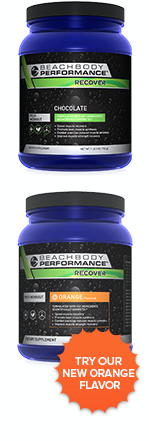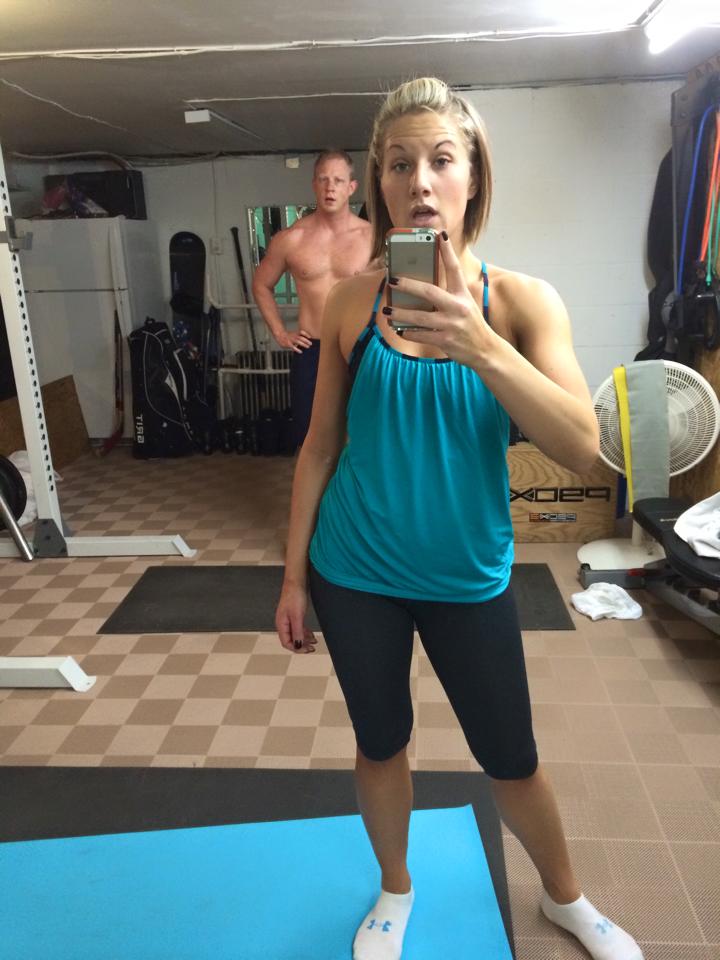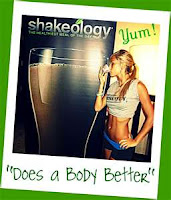So I have been working out intensly for 5 1/2 years and I still experience muscle soreness! Granted I took close to 10 months of intense off, due to pregnancy… Last week I had a nice little reunion with 21 Day Fix and man was I hurting! By Friday I was wondering if I would be able to walk throughout the weekend. My thighs, butt and abs are just aching! I have been doing Lifting, Cardio, and Dance Workouts that have squats and lunges, but it just goes to show that when you switch up your workouts you still work your muscles in a different way! So instead of taking a rest day and using that as an excuse not to workout. I chose to workout and make sure I stretch extra, warm up and cool down are very important!!! I did some research about working out and muscle soreness since so many of my customers experience it when they start my challenge groups. I figured it would be well worth sharing with all of you as well! Who isn’t sore from working out at one point or another! It’s best to know how to handle this discomfort.
It’s common for beginners to experience muscle soreness that lasts for a week or two, just as seasoned exercisers will be sore after a tough work out. Yes, you should keep working out even though you are sore, but there is more to it than that. The only way to avoid muscle soreness is to not workout at all! And that is certainly not going to get you that body you envision in your mind!
Muscle soreness has two primary causes. The first soreness you experience happens during your workout (“the burn”) and should subside within a couple of hours. This is caused by lactic acid production. When you are training and your muscles are not getting enough oxygen (anaerobic glycolysis), lactic acid builds up. You can break down lactic acid by continuing to move and by doing light aerobic exercise (such as walking) after your workout. This is why cool-downs are so important, especially for beginners. The longer you cool down, the faster that lactic acid will leave the muscles (typically within an hour).
The type of muscle soreness you are experiencing, up to a day or two (and sometimes even three) after your workout is known as DOMS (Delayed Onset Muscle Soreness). DOMS is caused by microscopic tears inside the muscles, resulting from weight-training or fully exhausting the muscles during cardio. This is normal. Again, beginners will be more sore and usually for longer, but if you really worked as hard as you should have during a weight-lifting session, you should be somewhat sore for the next day or two.
This is where rest comes in. You absolutely must rest the muscles you worked for 1-2 days after a workout. Take at least one day off between strength training sessions, and if you are still very sore, take 2 days off. (This means from lifting, not from all exercise such as cardio). If you don’t let your muscles recover and repair, they will continue to break down and you will actually get weaker.
To help prevent soreness in the future, and alleviate some of it now, be sure to:
1. Always warm-up for 5-10 minutes and cool-down for at least 5 minutes.
2. Stretch after a warm-up, during your workout, and after you are done. Only stretch when your muscles are already warm from some kind of light activity.
3. Stay active. The more your muscles move, the faster they will recover from exercise and soreness. If you choose to rest completely instead of “actively recovering” with light exercise, you’ll probably be sore longer.
One technique I’ve used with some success to reduce my own muscle soreness is to use a foam roller regularly as a part of my cool down. This has been particularly helpful for me after a long, high intensity bike ride or after I start a new type of exercise or a new weight training routine. Plus it just feels amazing to stretch out your muscles. The key is to find the sore spot and lay on it. So use the foam roller find the hot spot and just sink into it slowly moving back and forth almost giving yourself a massage! Feel the knots and tension melt away!
There are also some great post workout drinks and foods that you can consume to help reduce the post muscle soreness and help your body to recovery faster.
The most important meal you eat is the one that you have directly after your workout. for about an hour after your workout, there’s a window of opportunity when your muscles are literally starving for nutrients. We call this the golden hour. And the meal you eat at this time is the most important for building muscle and replenishing energy sources.
The first thing your body needs is a nice fresh supply of amino acids. Amino acids are the building blocks of protein and are used by your body for making muscles, hormones, neurotransmitters, bones and all sorts of other important things. Exercise depletes critical amino acids such as glutamine, valine, isoleucine and leucine–and the way you replenish your body’s supply is with protein. That means meat, chicken, eggs, fish or whey protein powder.
The second thing you need is some carbohydrates. Exercise draws upon your body’s stores of glycogen, which is the storage form of sugar. Glycogen waits in the liver and the muscles for a signal that sugar is needed: “Hey, she’s exercising, let’s give her some fuel!” Your body can hold about 1,800 calories of sugar as glycogen, which is plenty to fuel any workout short of a marathon, but athletes do best when their glycogen stores are full, so unless you are on a carb-restricted diet, some slow-burning carbs after working out is a good idea. (Hint: The best carbs are oatmeal, brown rice, grains like quinoa or amaranth, and all vegetables and fruits).
Your muscles need protein for repair and growth, and your body needs some carbs to replenish its glycogen stores. Truth be told, after a hard workout your body is like the plant in Little Shop of Horrors: It’s crying “Feed me!” and it won’t take no for an answer. Remember, right before exercise you have to consider the time it takes to digest food, so you need to go light. But post-workout is the ideal time to have a full meal. So what’s the best meal, or combination of foods, to have post-workout?
Shakeology is a great post workout meal. It has a perfect combination of protein and carbs along with all the essential amino acids and nutrients your body needs to recovery from the workout you just did. At least you don’t have to stand there in the kitchen wondering if what you are eating is the right option. Instead whip up a shake and go! It honestly is refreshing and delicious!
Beachbody Performance Recover it has everything in it mentioned above!
Why you need Beachbody Performance Recover Post-Workout Formula:
When you’re too sore from your workouts, it’s that much harder to stick with your program consistently. But when you reduce exercise-induced muscle soreness and improve strength recovery, you can recover from your workout faster—and hit the next one that much harder.
Faster recovery helps you get faster results, and that’s why you must take in the proper nutrients after every workout. The time-released proteins and phytonutrients in Recover maximize that critical post-workout opportunity to help reduce muscle breakdown, support muscle growth, fight exercise-induced muscle soreness, and jump-start your body’s natural rebuilding process, so you can come back stronger tomorrow.*
The ingredients in Recover Post-Workout Formula are scientifically shown to help:*
- Speed muscle recovery
- Combat exercise-induced muscle soreness
- Reduce muscle breakdown
- Promote lean-muscle growth
- Improve adaptation to exercise
- Improve muscle strength recovery
- Support muscle glycogen recovery
How to use Recover Post-Workout Formula 
Simply mix with water according to the label instructions, and drink within 30 minutes after exercise.
Why is Recover better than other post-workout products?*
- Way more effective than a simple protein powder, Recover uses key ingredients scientifically shown to help accelerate muscle recovery, reduce exercise-induced muscle soreness, and improve strength recovery. It provides your muscles with a rapid and sustained supply of nutrients when your workout is over, to boost your recovery to get you ready to crush your next workout.
- Key phytonutrients help muscle recovery, reduce exercise-induced muscle soreness, and speed up the return of normal muscle function.
- Recover contains functional ingredients that have been scientifically shown to work. Other products include gimmicky ingredients at insignificant levels with no evidence that they work.
- Key ingredients are included at their clinically established effective dosage levels.
- No artificial colors, artificial flavors, artificial sweeteners, or preservatives.
What are the key ingredients in Recover?*
- Pomegranate extract
This powerful ellagitannin-rich extract is scientifically shown to promote faster muscle recovery while helping to manage exercise-induced muscle soreness. It’s a natural recovery-enhancing ingredient that helps muscles return to normal strength faster, especially after intense workouts.
- 20 grams of high-quality protein
Fast-, intermediate-, and slow-release proteins ensure a constant supply of nutrients to create the optimal environment to improve muscle recovery and promote muscle growth.
- Branched-chain amino acids (BCAAs)
Recover also includes an ideal 2:1:1 ratio of Leucine, Isoleucine, and Valine, branched-chain amino acids that are unique for their ability to help promote muscle synthesis and support rebuilding.
Chicken and Mixed Vegetables
Four ounces of skinless, boneless chicken breast contains almost 35 grams of high-quality protein as well as small amounts of calcium, magnesium, zinc and iron; 255 mg of phosphorus; 287 mg of heart-healthy potassium; and 75 percent of the recommended dietary intake for niacin, a B vitamin that’s important in energy metabolism. One large (6-ounce) chicken breast is even more loaded: It contains more potassium than there is in a medium banana, plus a whopping 53 grams of protein.
The fat in boneless, skinless chicken is mostly monounsaturated. Only 1.1 grams of the 4 grams of fat in 4 ounces of chicken is saturated fat. The vegetables provide carbs and fiber. If you like, you can have half of a sweet potato with the meal and a spoonful of olive oil and/or almonds on the vegetables.
Breakfast Anytime: Egg Omelet with Avocado
Eggs are just about the best source of protein on the planet. Mix with as many vegetables as you like for a perfect meal. Hint: I also stir-fry a sliced apple into the mix. Serve with avocado for a nice dose of fiber and monounsaturated fat.
At the Gym: Whey Protein Shake
I consider whey protein powder the best protein powder available. You can mix whey powder with frozen berries (my favorite) and water, or with almost any combination of ingredients; I’ve thrown in a spoonful or two of peanut butter, oatmeal or sliced apple, or made it plain with water. All work. The whey provides the protein; the berries provide the carbs. (You can of course make the shake with milk or soymilk, but watch out for the calories. I don’t recommend making shakes with juice.)
The Three S’s: Salmon, Spinach and Sweet Potato
Here’s the ideal balanced meal. Wild salmon for protein and omega-3s, spinach for the cornucopia of vitamins and minerals (including the superstar of eye nutrition, lutein), and a sweet potato for slow-burning carbohydrates. It’s an almost perfect meal. You can add a little flaxseed oil (or olive oil or butter) to the sweet potato or even sprinkle it with almonds, but watch your portion size: While these additions are all brimming with health, they’re also high-calorie items.
Bodybuilder’s Delight: Tuna, Brown Rice and Vegetables
You can’t go to a “hard core” gym without seeing a bodybuilder eating this old classic from a Tupperware container. A single can of light tuna canned in water and drained provides an astonishing 42 grams of high-quality protein for under 200 calories. That same can has more than 100 percent of the daily value for niacin, 29 percent of the daily value for vitamin B6 and 82 percent of the daily value for vitamin B12. And tuna is a superb source of the vitally important cancer-protective trace mineral selenium. Add some brown rice for fiber and carbs, load up with the vegetables and you’re good to go.
You can’t go wrong with any of those five, or variations thereof. They’ll load up your body with the energy needed to refuel and the protein needed to rebuild and repair muscle. Couple them with hard, intense and frequent workouts, and you’ll be on the way to the body of your dreams.
This is why you need to push through when you are SORE… because its a GOOD thing and you can rebuild your muscles anyway!
A lot of this research was found on www.livestrong.com
[button link=”fb.com/nikki.kubanminton” type=”big” color=”purple”] Message Me To Chat More[/button]



